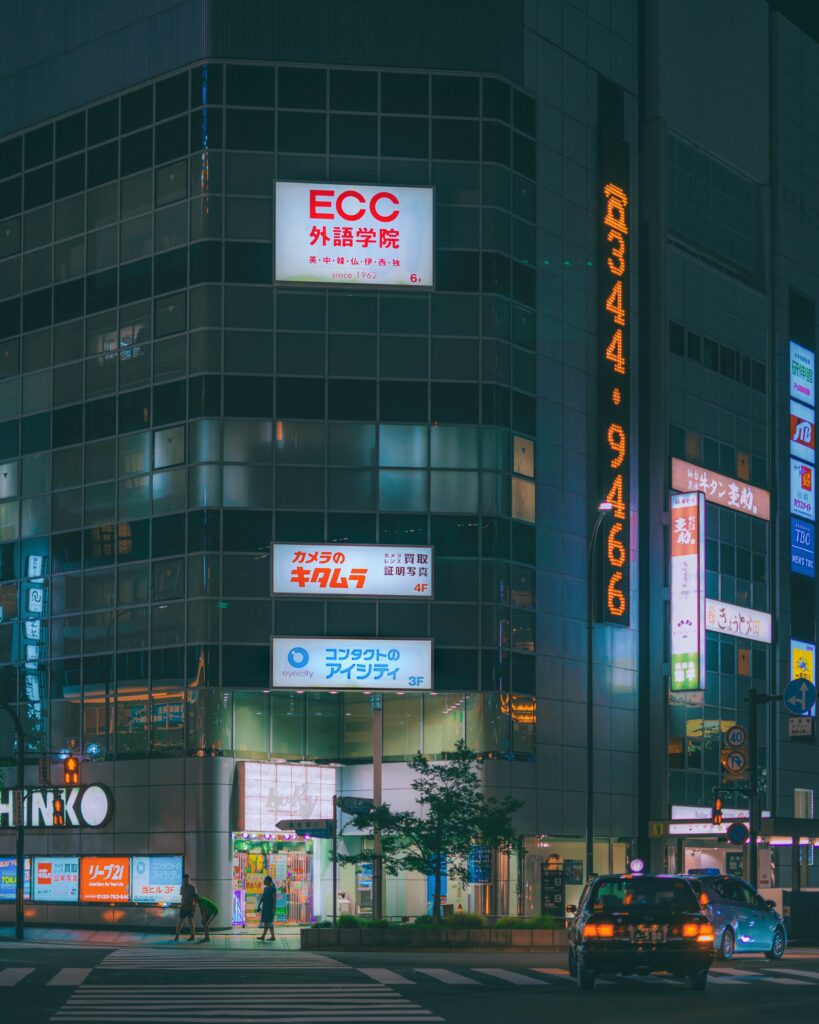Imagine this: You’re walking into a shopping center, and the very first thing you notice are the incredible architectural elements that have been seamlessly implemented to enhance not only the aesthetic appeal but also the functional efficiency of the space. This article, “Innovative Architectural Elements in Shopping Center Design,” is about to guide you along the lines of those unique features that transform ordinary shopping experiences into something truly extraordinary. Hold tight as you embark on a journey that explores the world of architectural innovation and how it continues to revolutionize shopping center design.
The Importance of Innovative Architectural Elements in Shopping Center Design
A shopping center isn’t just a place to shop. It’s a carefully crafted experience designed to entice customers, create memorable encounters, and foster a genuine connection with brands. A key element that plays a pivotal role in this experience is the architecture. Let’s delve into the importance of innovative architectural elements in shaping the shopping center design.
The Role of Architecture in Attracting Consumers
Architecture holds the ability to create excitement and enhance the overall shopping experience. Imagine stepping into a shopping center crafted with unique, vibrant architecture, enticing sights, and thoughtful spaces – each element contributing to a sensory experience that beckons you to explore. The architectural design acts as a magnet, engaging your senses even before you start spending time at the stores. Architecture that prioritizes user experience has the potential to increase footfall and ultimately boosts consumer spending.
Influence of Unique Architectural Elements on a Shopping Center’s Image
Innovative architectural elements not only enhance user experience but also frame the shopping center’s image. The architectural design can carry a center’s unique ‘personality’, highlighting its peculiarities and positioning it within the desired market segment. When innovative elements are thoughtfully incorporated, and devoid of gimmicks, they help develop a comprehensive and cohesive shopping center image that resonates with the audience and outlasts fleeting trends.
Branding Through Architecture
Architectural elements can do more than just provide an aesthetic appeal. They can essentially become a part of the shopping center’s branding strategy.
The Concept of Architectural Branding
Architectural branding is where specific design elements are used to solidify a shopping center’s identity, thereby establishing a recognizable image within a crowded domain. By interweaving brand values with the structural design, customers can instantly identify the shopping center and associate it with positive shopping experiences.
How Architectural Branding Contributes to a Shopping Center’s Identity
Every design element, from the façade to the interior layouts, contributes to the overall identity of the shopping center. Architectural design that reflects the shopping center’s brand values creates a cohesive and compelling identity. Over time, this identity strengthens customer loyalty and provides the shopping center with a distinctive edge in the competitive retail market.



This image is property of images.unsplash.com.
Innovative Use of Spaces
In the world of retail design, space is more than just four walls and a ceiling – it is an opportunity for innovation and engagement.
Creating Multi-functional Spaces
The creation of multi-functional spaces provides opportunities for shopping centers to diversify their offer. Common areas can be designed to host pop-up shops, events, or leisure spaces, adding a new dimension to the shopping experience and attracting a wide variety of customers.
Importance of Spatial Flexibility in Shopping Center Design
In today’s fast-paced retail market, spatial flexibility is key. Shopping centers should be designed to easily accommodate various events, shift around stores, or be reconfigured to introduce new brands. Flexible space design caters to the evolving needs of modern customers and ensures the shopping center remains relevant, engaging, and profitable.
Architectural Sustainability
As more customers become environmentally conscious, embracing green architectural practices for shopping center design can pay dividends.
Relevance of Eco-friendly Architectural Designs
Eco-friendly architectural designs are not just a socially responsible practice, but they are also a powerful branding tool. Green design elements, such as solar panels and water-saving features, appeal to eco-conscious consumers and help shopping centers establish themselves as a thoughtful and sustainable destination.
Effectiveness of Sustainable Architectural Practices
Green architecture is more than a branding solution – it is also a cost-effective measure. Sustainable design can help reduce energy consumption and waste, leading to lower operational costs in the long run. Thus, the effectiveness of sustainable architectural practices stretch from environmental protection to economic efficiency.



This image is property of images.unsplash.com.
Inclusion of Cultural and Historical Elements
While modernity and innovation are paramount, incorporating local culture and history can add a unique charm to the shopping center design.
Integration of Local Cultural and Historical Elements in Design
By reflecting the local culture and history in the shopping center design, architects can create a sense of familiarity and identity. Infusing local architectural characteristics or incorporating historical elements may result in shopping centers becoming a reflection of their surrounding community, fostering a bond between the building and its attendees.
Impact of Cultural and Historical Elements on Shopping Experience
The incorporation of local cultural and historical elements can enrich the shopping experience, making customers feel like they are a part of a story rather than just a transactional space. Also, for tourists, these elements can create memorable shopping experiences, as they get to explore and connect with the locale even when they’re shopping.
Effective Use of Lighting
Lighting is more than just a functional element; it’s a seriously underrated aspect of architectural retail design that can help to dramatically enrich consumer experience.
Importance of Innovative Lighting Techniques
Innovative lighting techniques can play a key role in highlighting architectural design features and various shop displays. Good lighting schemes can also create a welcoming ambiance and guide customer movement throughout the shopping center.
How Lighting Influences Customer Experience
Effective lighting design can influence various psychological aspects, such as mood, perception, and even buying behaviors. Certain lighting techniques can encourage customers to spend more time and money, from spotlighting sale items to create soft, warm areas that invite relaxed browsing.



This image is property of images.unsplash.com.
Incorporation of Technology
Advancements in technology give rise to a multitude of opportunities for creative architectural design within shopping centers.
Role of Technology in Architectural Design
From interactive digital displays to smart lighting systems, technology can be used to enhance both the aesthetic and functionality of a shopping center. Integrating technology can help create more engaging, interactive, and personalized shopping experiences.
Examples of Modern Tech-Infused Architectural Elements
Touch screens and digital signage have expanded wayfinding beyond traditional maps. Augmented and virtual reality technologies have started to redefine the concept of fitting rooms. Interactive art installations can also transform shopping centers into immersive experiences. These tech-driven elements blend seamlessly within the architectural design, pushing boundaries to create shopping centers of the future.
Implementing Urban Elements
Incorporating elements of the urban landscape into shopping center design can create a continuity between the building and its environment.
Incorporation of Urban Environment in Shopping Center Design
The integration of urban elements can contribute to the sense of place and create homogeneous transition zones that make the shopping center feel like a natural extension of the urban fabric. Shaping shopping centers around cityscapes results in designs that resonate with the public.
Connection Between Urban Elements and Customer Attraction
Shopping centers that embody urban qualities often feel more accessible to customers and less isolated. By mirroring the characteristics of the surrounding urban environment, architects can create shopping spaces that customers perceive as familiar and welcoming.
Artistic Architectural Elements
Artistic touches in architectural design can significantly impact the visual appeal of shopping centers.
Integration of Artistic Features in Design
Art and architecture have always had a synergistic relationship. Infusing art into the architectural design can turn a shopping center into a cultural destination. This could include sculptures, murals, intricate façade designs, or innovative use of colors.
Effects of Artistic Elements on Aesthetic Appeal
Artistic elements greatly enhance aesthetics, making the shopping center visually intriguing and appealing. Art can elicit emotions and stimulate curiosity which encourages exploration. Ultimately, customers are drawn toward such spaces, positively impacting foot traffic and dwell time.
Revitalization of Existing Buildings
Lastly, revitalizing existing buildings can give shopping center design a refreshing twist.
Innovative Concepts for Redevelopment
Revitalization doesn’t just mean renovation; it’s an opportunity to breathe new life into a space. Architects can create adaptive designs that respect the building’s history while injecting modern elements to meet current consumer demands.
Benefits of Revitalizing Older Buildings for Shopping Center Design
Not only does this kind of redevelopment save resources, but it also contributes to a sense of nostalgia and romanticism. Revitalized buildings carry a story, lending an air of authenticity that new constructions might lack. They are also likely to captivate the interest of customers looking for unique shopping experiences.
In conclusion, innovative architectural elements in shopping center design play a crucial role in shaping consumer perceptions and experiences. With thoughtful, sustainable, and engaging design strategies, architects can create shopping centers that enchant customers and thrive in a competitive retail landscape. The right architecture can make a shopping center more than just a place to shop—it can make it an integral part of customers’ social fabric.
